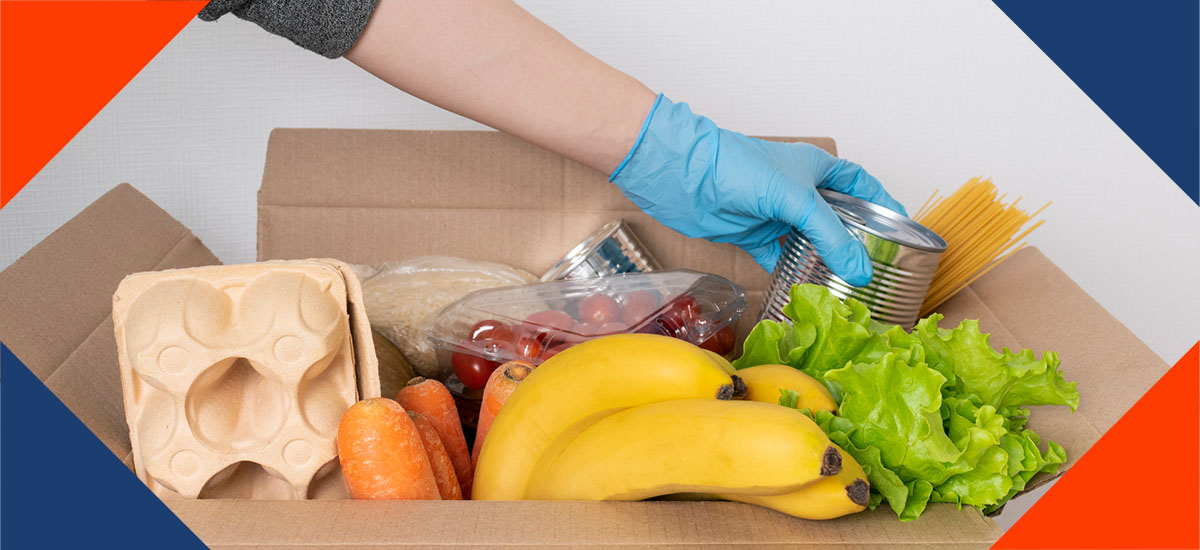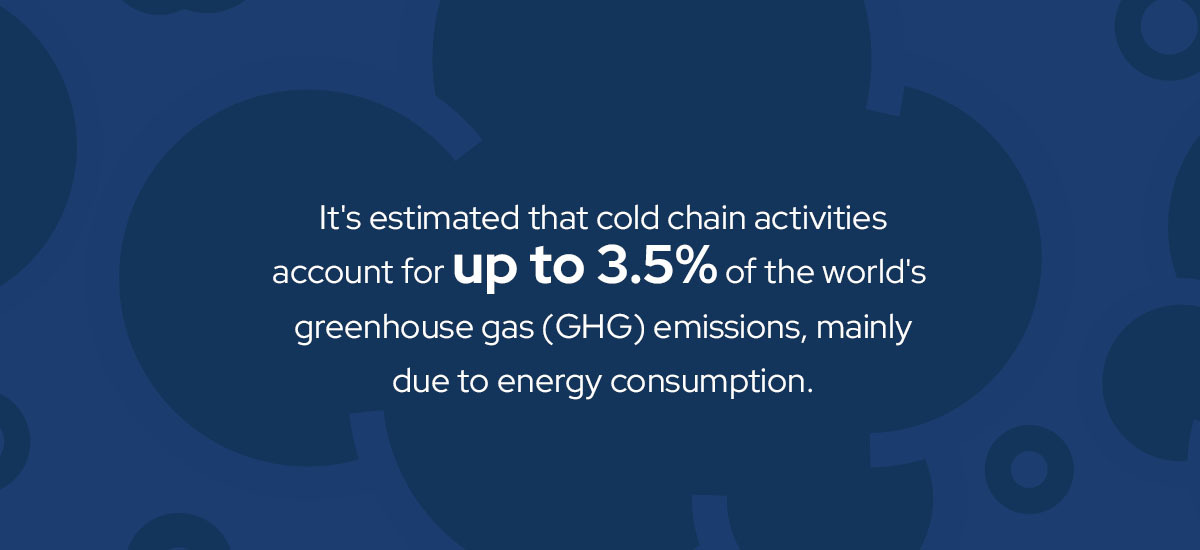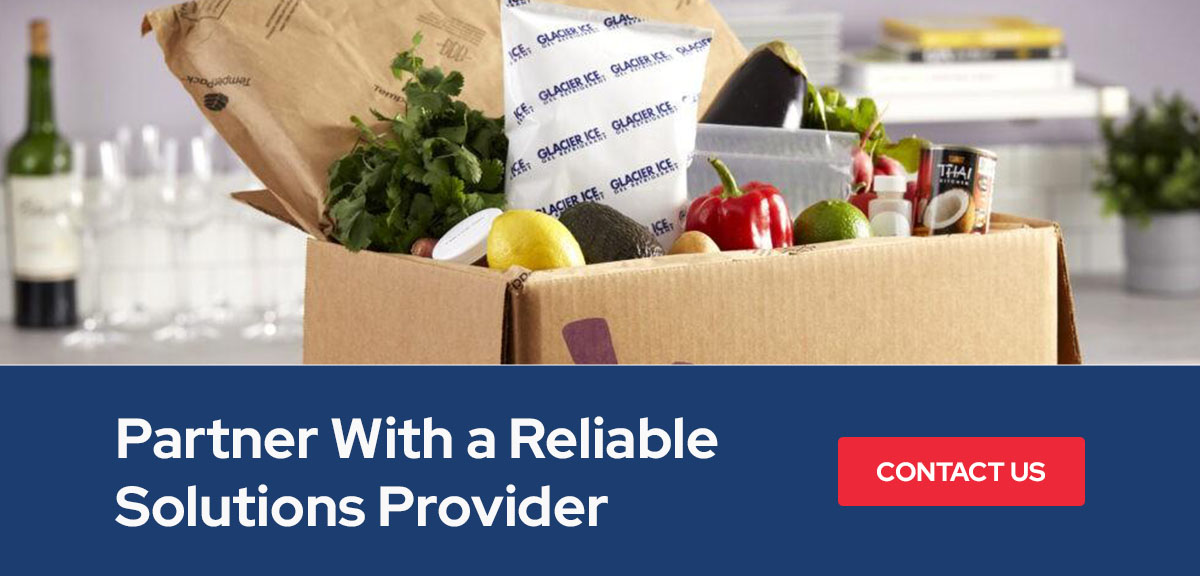If you’re in the cold chain shipping industry, you understand the importance of properly packing perishable products to prevent temperature fluctuations. Any deviation outside the recommended temperature range can lead to product waste and financial loss. Using the correct packaging is just one key factor in ensuring temperature deviations do not occur.
However, cold packing’s challenges are numerous and varied, from determining the right refrigerant solution to keeping packaging costs low. The good news is that there are cost-effective and innovative solutions to help you pack and transport products while maintaining precise temperature control.
What Is Cold Packing?
Cold packing is the process of carefully packaging perishable products, like foods and pharmaceuticals, to limit in-transit movement, keep out contaminants and prevent temperature deviations. It generally involves using the following items:
- An insulated container to reduce heat transfer
- Fillers, like bubble wrap, to limit movement
- Refrigerants to maintain the required temperature range
- A monitoring device to ensure a temperature excursion did not occur
Cold chain packages must also be sealed and labeled correctly according to best practices and applicable regulations.
What Are the Common Challenges of Cold Packing?
Cold chain shippers have much to think about when packing products, including how to overcome common challenges such as the following:
Preventing Temperature Excursions
Many external forces can lead to temperature fluctuations, from hot weather to stalled traffic. Still, businesses must ensure their products are kept within precise temperature ranges to preserve their integrity. This requires packing products with the right amount of insulation and high-quality refrigerants.
Balancing Sustainability With Cost-Efficiency
The cold chain industry requires substantial energy to power refrigeration equipment and keep products safe. It’s estimated that cold chain activities account for up to 3.5% of the world’s greenhouse gas (GHG) emissions, mainly due to energy consumption.
In response to GHGs and climate change, various government initiatives and European laws, as well as the Paris Agreement, are increasing the pressure on cold chain businesses to implement more sustainable practices — including how they package their products. However, finding cost-effective ways to decrease GHGs while maintaining temperature control is a challenge that requires innovative solutions.
Navigating Strict Regulations
Navigating and adhering to regulations like those established by the Food and Drug Administration and the International Air Transport Association is not always easy. Regulations vary depending on the product being shipped, the method of transport being used, and whether it’s being shipped internationally or domestically.
Additionally, regulations and industry standards evolve. Businesses must ensure their packaging procedures adhere to the latest rules and keep employees up to date on best practices — which can be another challenge.
Ensuring Proper Training
Improperly trained employees are more prone to making mistakes, like using inadequate insulation, that could compromise an entire shipment. However, factors like widespread supply chain staffing shortages, high turnover rates, language barriers and a lack of training resources can make it challenging to ensure employees are properly trained on packaging protocols.
How Do You Solve Cold Packing Challenges?
Although packing perishable products will likely always be more complex than packaging dry goods, it is possible to overcome common challenges. Here are some tips:
Choose Reliable Packaging Solutions
One way to ensure accurate temperature control is to pack products with durable refrigerants from a reputable supplier. Choose a supplier you can trust to deliver high-quality solutions when you need them.
That said, high quality does not have to mean high cost. For example, expertly designed gel packs can be the ideal, affordable solution for last-mile deliveries. Look for gel packs with the following features:
- Puncture-resistant film
- Non-toxic gel
- Slow-to-thaw composition
- Required temperature range
To give you a head start, our Glacier Ice™ gel packs are our most economical, everyday refrigerant designed to keep pharmaceuticals, meal kits and other perishables within the required temperature range during transport.
Use Eco-Friendly Gel Packs
Eco-friendly packaging solutions can help your business further its sustainability goals and show customers you care about the planet — without exceeding your budget. Vortec Ice™, for instance, is our most cost-effective and sustainable gel pack. Its gel is specially formulated for safe drain and septic disposal, and its pouch can be recycled with plastic bags. As a drain-safe gel pack, Vortec Ice™ offers a low-cost way to divert waste from landfills and support efforts to decrease GHG emissions.
Optimize Package Space
Packing products strategically to minimize empty space helps to limit movement, reduce heat transfer and maintain the required temperature range longer. Ensure employees are trained to properly place products, insulation and refrigerants within the shipping container to maximize space use and improve cooling and insulation efficiency.
Additionally, if your packages call for precise shape tolerances to prevent product damage and temperature excursions, you can use refrigerant blocks like Glacier Foam Bricks. Our Glacier Foam Bricks retain their shape throughout the freeze-thaw cycle, enabling tighter pack-outs and optimal protection.
Establish Standard Operating Procedures
Standard operating procedures (SOPs) show employees the correct, compliant and standard way of handling cold chain items. They prevent confusion and miscommunication and serve as valuable guides for trainees and their trainers. Ultimately, SOPs can prevent costly packaging errors.
In general, a packaging SOP should include the following information:
- Specific product temperature ranges provided by the manufacturer
- Gel pack freezing times per the manufacturer’s instructions
- The number of gel packs to use and how to place them within the package
- How to create a heat sink if needed to protect items from over-chilling
- Instructions on using temperature monitoring technology and logging data
- Steps on properly sealing and labeling packages to meet applicable regulations
Review and modify your SOPs as needed to include industry updates.
Have a Backup Plan
Sometimes, the unexpected is inevitable. While we can’t keep certain events from happening, we can prepare for them — and this preparation can make the difference between a lost load and a saved one.
To be sure you’re prepared for unforeseen events, create or update a contingency plan and include it in your SOP. Consider all the possible things that could go wrong in every step of the cold chain, including the packing stage. Think about how employees can react to these scenarios in the best way possible to prevent or minimize loss.
For example, your contingency plan might include instructions to keep emergency refrigerants or insulation materials on hand. It might also instruct employees to take the load to the nearest cold storage partner if equipment fails. The plan can encourage employees to react promptly to temperature monitoring device alerts in any emergency.
Partner With a Reliable Solutions Provider
Another way to overcome cold chain challenges is to partner with Pelton Shepherd. We have over 70 years of experience providing pioneering refrigerant solutions and a customer-focused approach.
With our Conditioning Operations, Logistics and Delivery (COLD) program, we’ll collaborate with you to forecast your gel pack needs and ensure they’re delivered to you ready for use. With COLD, you don’t have to worry about storing or conditioning gel packs at your facility.
Contact us today to learn more about our COLD program or innovative gel pack lines.





